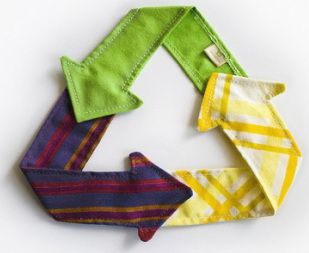What is sustainable clothing?
Sustainable clothing is a process and movement for fashion that helps produce clothing that is environmentally friendly.
Sustainable clothing refers to clothing that is derived from upcycled, eco-friendly, biodegradable and organic material that was produced ethically.
Sustainable clothing is the alternative to fast fashion which is a business model that uses cheap materials and labor to produce clothing at a rapid pace. Fast fashions emphasizes making fashion trends quickly and cheaply available to consumers. It involves inexpensive production of cheap materials by mass market retailers. It also forces trends to go in and out of style rapidly. This leads to wearable clothing being tossed away at alarming rates causing a slew of environmental problems.
What makes it sustainable?

Sustainable clothing is produced from eco-friendly and biodegradable products. Meaning when the fabric materials decompose, they turn back into natural elements instead of contributing to landfills.
This differs from fast fashion clothing in which inexpensive, synthetic materials such as polyester or nylon are used. Polyester and nylon are non-biodegradable meaning they can never be converted to a state that is naturally found in the world. They will live to remain in the environment indefinitely.
Who needs sustainable clothing?
We should all push for sustainable clothing because it is more environmentally friendly which makes it important because it makes a safer environment for people by producing clothing that doesn’t involve harmful toxins and chemicals.
Synthetic polyester and nylon are made from chemical reactions involving the use of fossil fuels such as coal, petroleum, gas, and limestone. When coal is burned it creates heavy amounts of air pollution containing carbon dioxide. When petroleum is used it creates several air pollutants such as particulate matter, nitrogen oxides, carbon monoxide, hydrogen sulfide, and sulfur dioxide.
Why do we need a push for sustainable clothing?
Since the 1960s the amount of clothing bought by Americans has tripled. Rapid production and consumption rates have directly led to an increase in air and water pollution. According to the Environmental Protection Agency, about 15 million tons of textile clothing waste are produced yearly. When textile clothing ends up in landfills the chemicals on the clothes, such as the dye, can cause environmental damage by leaking chemicals into the ground.
Fast fashion sometimes produces so much clothing for a given trend that not all of it is sold. Unsold clothes are often burned and release carbon dioxide into the atmosphere. As per a World Resources Institute report, the fast fashion industry is responsible for 1.2 billion tons of carbon dioxide released into the atmosphere every year.
We need to push for sustainable clothing because on average each American throws away 70 pounds of clothing every year. Only 15 percent of used clothing in the United States gets recycled or donated. The rest goes into landfills, meaning textiles have one of the poorest recycling rates of any reusable material. It is also a more innovative approach to lessening the carbon footprint and chemical load on the planet.
Through the use of sustainable clothing, we can lessen our usage of fossil fuels and water as well as lessen the number of pollutants that enter our air and oceans. Sustainable clothing will lead to a safer and healthier future for all.
Through this practice, there is less use of water production and consumption.
How can we be more sustainable in fashion?
There are many ways you can invest in sustainable clothing. One way can simply start by investing in high-quality clothing and minimize consumption with fast fashion brands.
Consumers are getting into secondhand/vintage shopping which is good for a decrease in the waste of clothing. Today, you can also rent, lease, and shop another method of shopping sustainable.
Lastly, shop conscience. Know what you are buying and the tremendous effects that it has on the earth that we all live in.


